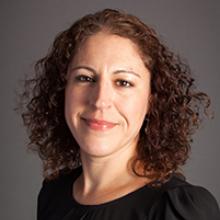Quality Standards: Disseminate│ Building Quality in Afterschool
At this stage in the quality standards development process, you have brought together a collaborative group of stakeholders to research and design a set of afterschool quality standards, and you have successfully navigated the approval process in your state. You are now ready to share the standards with the field more broadly, with a vision toward wide adoption of the standards.
Resources: Disseminating Quality Standards
Create a Communication Plan
Before afterschool programs can begin to adopt the quality standards, they need to know that the standards exist. The stakeholder group that was tasked with designing the quality standards can raise awareness of the standards by crafting and employing a communications plan with clear roles, timelines, and expected outcomes for sharing the standards with the field.
We recommend that state networks revisit their original design and vision documents to help shape their communications. Your vision should clearly identify
- the priority elements of afterschool practice for your state;
- the intended user for these standards;
- a long-term vision for quality improvement systems work in afterschool programming; and
- any associated tools and resources.
Once you’ve defined your vision, it’s time to create a communication plan to effectively share it. Start by asking your team these questions:
- Which items from the vision documents should you include in your communication plan to ensure more successful outreach and adoption?
- What types of messaging will resonate with your users?
Statewide afterschool networks should use their own networks and stakeholder organizations to reach out to field practitioners. At this stage, it is helpful to establish a set of high-level partnerships that will be responsible for sharing the standards widely. Consider partnering with your state department of education, regional/city government agencies, state and local elected officials, and local foundations to publicize the standards to their networks. Make sure practitioners can easily access and download any communications materials using a relatively permanent pathway (e.g., a website or online PDFs).
Educate the Field
New tools are useful only when they are used effectively. In parallel to a broad communication and awareness-raising campaign, the quality standards stakeholder group should set up an ongoing series of field education opportunities. States have used webinars, in-person trainings, information sessions, and town halls. Education opportunities can be multipurpose; they should inform practitioners about the quality standards and how they can be used, but they also can be a time to solicit feedback from the field on the standards, build practitioner buy-in and ownership of the standards, and educate potential funders about your state’s quality improvement work.
Education opportunities, such as in-person trainings, question-and-answer sessions, and webinars, should be offered regularly in the first few years of your quality standards work. As you plan the sessions, make sure that the calendar of opportunities is widely publicized, the sessions themselves are accessible, and multiple options are offered for all areas of your state.
Resources: Disseminating Quality Standards
Believe It. Build It. Minnesota’s Guide to Effective Afterschool Practices (PDF): Minnesota’s Ignite Afterschool network developed the Believe It. Build It. guide and toolkit for practitioners, funders, and system builders to learn more about effective afterschool practices and continuous quality improvement.
Communications Resources (Website): The Afterschool Alliance and Burness developed this online toolkit to help practitioners make the case for afterschool programs to a variety of audiences by using multiple platforms.
Messages Made Simple: Communications Toolkit for Expanded Learning (PDF): In this toolkit, Every Hour Counts explains how to use clear and consistent language when communicating the value of expanded learning.

